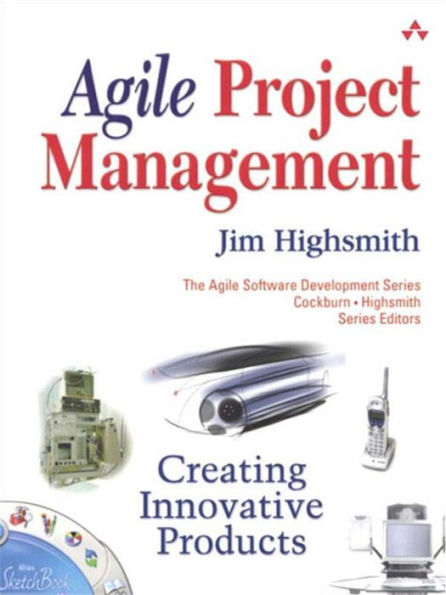Please note - there is now a second edition of this book available, with the ISBN of 0321658396.
“Jim Highsmith is one of a few modern writers who are helping us understand the new nature of work in the knowledge economy.”
—Rob Austin, Assistant Professor, Harvard Business School
“This is the project management book we’ve all been waiting for—the book that effectively combines Agile methods and rigorous project management. Not only does this book help us make sense of project management in this current world of iterative, incremental Agile methods, but it’s an all-around good read!”
—Lynne Ellen, Sr. VP & CIO, DTE Energy
“Finally a book that reconciles the passion of the Agile Software movement with the needed disciplines of project management. Jim’s book has provided a service to all of us.”
—Neville R(oy) Singham, CEO, ThoughtWorks, Inc.
“The world of product development is becoming more dynamic and uncertain. Many managers cope by reinforcing processes, adding documentation, or further honing costs. This isn’t working. Highsmith brilliantly guides us into an alternative that fits the times.”
—Preston G. Smith, principal, New Product Dynamics/coauthor, Developing Products in Half the Time
One of the field’s leading experts brings together all the knowledge and resources you need to use APM in your next project. Jim Highsmith shows why APM should be in every manager’s toolkit, thoroughly addressing the questions project managers raise about Agile approaches. He systematically introduces the five-phase APM framework, then presents specific, proven tools for every project participant. Coverage includes:
- Six principles of Agile Project Management
- How to capitalize on emerging new product development technologies
- Putting customers at the center of your project, where they belong
- Creating adaptive teams that respond quickly to changes in your project’s “ecosystem”
- Which projects will benefit from APM—and which won’t
- APM’s five phases: Envision, Speculate, Explore, Adapt, Close
- APM practices, including the Product Vision Box and Project Data Sheet
- Leveraging your PMI skills in Agile environments
- Scaling APM to larger projects and teams
- For every project manager, team leader, and team member
Please note - there is now a second edition of this book available, with the ISBN of 0321658396.
“Jim Highsmith is one of a few modern writers who are helping us understand the new nature of work in the knowledge economy.”
—Rob Austin, Assistant Professor, Harvard Business School
“This is the project management book we’ve all been waiting for—the book that effectively combines Agile methods and rigorous project management. Not only does this book help us make sense of project management in this current world of iterative, incremental Agile methods, but it’s an all-around good read!”
—Lynne Ellen, Sr. VP & CIO, DTE Energy
“Finally a book that reconciles the passion of the Agile Software movement with the needed disciplines of project management. Jim’s book has provided a service to all of us.”
—Neville R(oy) Singham, CEO, ThoughtWorks, Inc.
“The world of product development is becoming more dynamic and uncertain. Many managers cope by reinforcing processes, adding documentation, or further honing costs. This isn’t working. Highsmith brilliantly guides us into an alternative that fits the times.”
—Preston G. Smith, principal, New Product Dynamics/coauthor, Developing Products in Half the Time
One of the field’s leading experts brings together all the knowledge and resources you need to use APM in your next project. Jim Highsmith shows why APM should be in every manager’s toolkit, thoroughly addressing the questions project managers raise about Agile approaches. He systematically introduces the five-phase APM framework, then presents specific, proven tools for every project participant. Coverage includes:
- Six principles of Agile Project Management
- How to capitalize on emerging new product development technologies
- Putting customers at the center of your project, where they belong
- Creating adaptive teams that respond quickly to changes in your project’s “ecosystem”
- Which projects will benefit from APM—and which won’t
- APM’s five phases: Envision, Speculate, Explore, Adapt, Close
- APM practices, including the Product Vision Box and Project Data Sheet
- Leveraging your PMI skills in Agile environments
- Scaling APM to larger projects and teams
- For every project manager, team leader, and team member

Agile Project Management: Creating Innovative Products
312
Agile Project Management: Creating Innovative Products
312
Product Details
| ISBN-13: | 9780321630025 |
|---|---|
| Publisher: | Pearson Education |
| Publication date: | 04/06/2004 |
| Series: | Agile Software Development Series |
| Sold by: | Barnes & Noble |
| Format: | eBook |
| Pages: | 312 |
| File size: | 1 MB |
| Age Range: | 18 Years |
